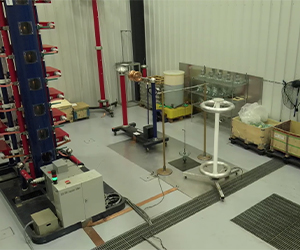Building Automation System - HVAC Control
By R.W. Hurst, Editor

Download Our OSHA 4474 Fact Sheet – Establishing Boundaries Around Arc Flash Hazards

- Understand the difference between arc flash and electric shock boundaries
- Learn who may cross each boundary and under what conditions
- Apply voltage-based rules for safer approach distances
Building automation system integrates electrical controls for HVAC, lighting, and power distribution, using BMS platforms, PLCs, BACnet/Modbus protocols, IoT sensors, and SCADA to optimize energy management, demand response, safety, and predictive maintenance.
What Is a Building Automation System?
An electrical control system automating HVAC, lighting, and power to improve efficiency, safety, reliability, and uptime.
✅ Integrates PLCs, sensors, VFDs, and switchgear controls
✅ Uses BACnet/Modbus for HVAC, lighting, and metering
✅ Enables energy analytics, demand response, fault diagnostics
In an era of rapidly evolving technology, smart buildings have become crucial to modern infrastructure. With the advent of the Internet of Things (IoT), facility managers are increasingly adopting advanced systems to monitor and control various parts of a building's performance. One such solution is the Building Automation System (BAS), which focuses on improving energy efficiency and occupant comfort and reducing maintenance costs. For an overview of foundational concepts, resources like what is building automation can help contextualize these systems for stakeholders.
The primary purpose of a building automation system is to streamline the operation and management of a building's critical subsystems, such as Heating, Ventilation, Air Conditioning (HVAC), lighting, security, and energy management. In addition, a centralized control platform enables facility managers to optimize resource utilization and respond to changing conditions more effectively. To understand device-level orchestration, guidance on energy management controls clarifies how setpoints and schedules are coordinated across platforms.
A typical BAS comprises three main components: input, controller, and output. Input devices like sensors to measure environmental parameters like temperature, humidity, and light levels. Controllers process this information and use pre-defined algorithms to determine the best action. Output devices, including actuators and relays, then implement these decisions by adjusting various systems, such as modifying the temperature in an HVAC system.
Sign Up for Electricity Forum’s Building Automation Newsletter
Stay informed with our FREE Building Automation Newsletter — get the latest news, breakthrough technologies, and expert insights, delivered straight to your inbox.
In practice, the data path often feeds into building energy management systems that aggregate trends for analytics and reporting.
There are numerous benefits to implementing a building automation system. First and foremost, it can significantly improve energy efficiency. By monitoring and controlling various systems, including HVAC, lighting, and energy management, a building automation system can ensure that resources are only used when necessary, leading to substantial cost savings. Moreover, intelligent building control system algorithms can identify inefficiencies and take corrective action, enhancing overall performance. When paired with disciplined energy management practices, these optimizations translate directly into measurable Key Performance Indicators.
In addition to improving energy efficiency, a BAS also enhances occupant comfort. By monitoring environmental factors like temperature, humidity, and air quality, the system can always maintain optimal conditions for occupants. Furthermore, many systems allow users to customize their preferences via a user interface, empowering them to create a comfortable environment suited to their needs. Organizations that formalize a energy management program often align comfort objectives with operational targets more consistently.
Another significant advantage of a BAS is its ability to integrate with IoT devices. As the IoT ecosystem expands, more devices and sensors are being developed, providing valuable data for building management. By incorporating this information into the building automation system, facility managers can gain deeper insights into building performance and make more informed decisions. This increasingly connected architecture enables advanced energy management workflows that leverage predictive models and fault detection for continuous improvement.
A wide range of building automation control systems is available on the market, catering to different needs and budgets. These include Energy Management Systems (EMS), which focus specifically on monitoring and controlling energy usage, and Building Management Systems (BMS), which offer a more comprehensive integration of various subsystems. In addition, some solutions provide systems integration capabilities, enabling facility managers to combine multiple systems under a user interface. Choosing among various energy management systems requires assessing scalability, interoperability, and cybersecurity posture for long-term success.
As technology continues to evolve, so will the capabilities of building automation systems. From advanced HVAC control to robust security systems and energy management solutions, a building automation system can potentially transform how buildings are managed and maintained. By implementing these systems, facility managers can achieve significant cost savings, improve occupant comfort, and contribute to a more sustainable future.
A building automation system is essential for modern facility management. They provide centralized control over various subsystems, improving energy savings and efficiency, occupant comfort, and reducing maintenance costs. Furthermore, as the IoT ecosystem expands, these systems are set to become even more powerful, offering deeper insights and more advanced control over building performance. So whether you are a facility manager looking to optimize your existing infrastructure or an architect designing the next generation of smart buildings, embracing the potential of building automation systems will undoubtedly lead to a more efficient and sustainable future.








